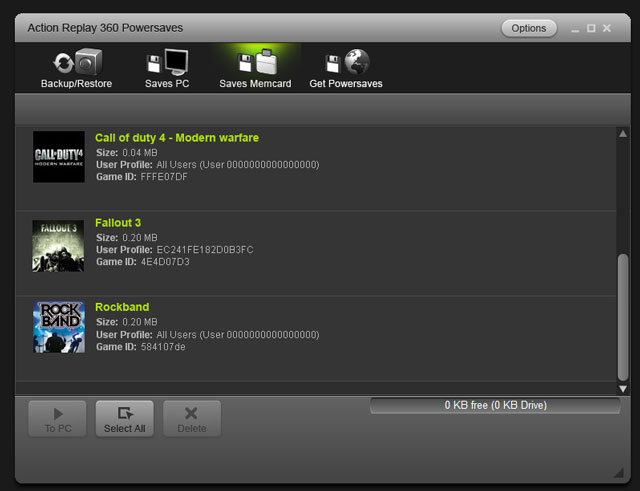Download Nintendo Power Glove Program Codes
I'm a video game programmer by day, and I love playing with custom input peripherals. I decided to mod a Nintendo Power Glove to work with some of the games I've worked on. It replaces the original Power Glove's ultrasonic sensors with an accelerometer, the microcontroller with an open-source Arduino, and the wired connection with Bluetooth. I'll show you how to mod your own Power Glove, so you can make it into something more than just a crappy controller for your NES! Make the future you remember from your childhood, and recycle that glove that was just gathering dust! I encourage you to do three things before starting: 1) Download the. 2) Download (or have on hand) the.
Status Symbols: Nintendo Power Glove. Any other title you had to enter in a special code on that awkward numpad to “program” the glove for use with. Buy NES Power Glove at NintendosForSale.com. NintendosForSale.com Guarantees every game and. Nintendo NES; Super Nintendo (SNES). Product Code: 217. The Power Glove, that beloved icon of 80’s glory and everlasting tribute to Fred Savage, is still a treasured item for Nintendo collectors, fetching around $100 on. Power Glove Instruction. Get it to work because GOD DAMMIT you have to program it first using a series of. Nintendo Power Glove Instruction.
I explain some steps in more detail and there are additional visuals that complement the pictures here. 3) Watch the entire video and read this entire Instructable before starting! If there's conflicting information, this guide takes precedence. For all download links to the video, code, etc, check.
I'll start with the goals I had in mind when designing the project and picking parts: 1) Retain as much functionality from the original glove as possible. Sure, you could just plug in the guts from a wiimote, but those bend sensors are so fun!

2) Fit everything in the existing housings. Part of the Power Glove's awesomeness is its ludicrous, sleek, retro-futuristic look. I didn't want to spoil that with wires and gubbins sticking all out. 3) Make it wireless, and robust. No one wants to fake-punch if they're afraid of ripping their computer off their desk or breaking the device. 4) Reduce power consumption as much as possible.
I hate wasting and/or constantly recharging batteries, so I picked components (like the accelerometer) that advertised low power consumption. 5) Reduce cost as much as possible, while retaining ease of creation. I've opted to use components sold with breakout boards instead of making a custom board, and I've cannibalized parts from either the original Power Glove or commonplace items (like old computers) where I can. Here's the full list of parts I used to mod my Power Glove: Original Nintendo Power Glove -- $40 () Arduino Pro Mini 3.3V (8MHz) -- $18.95 () ADXL330 3-axis accelerometer with breakout board -- $34.95 () CD74HC4067 Analog/Digital MUX with breakout board -- $4.95 () BlueSMiRF Silver Bluetooth communications module -- $49.95 () Battery clip and battery.
I used a rechargeable 3.7V 1100mAh battery (), but anything over 3.3V should work. 2x AA is insufficient. There are a number of areas in this project where multiple wires are bundled together. Specifically, connecting the control pad wrist board to the Arduino, connecting the Bluetooth module to the Arduino, and connecting the multiplexer outputs to the palm board. I found it useful to use ribbon cables for each of these connections.
Here's a way to make ribbon cables out of old computer cables. Nobody uses floppy drives anymore, so they're a plentiful source to cannibalize from. I Screen Recorder V7.0.1.432-bean. To make a custom ribbon cable, simply take a ribbon cable from an old floppy or CD drive, cut it to the proper length, and carefully use a razor blade to cut the proper number of wires from the original ribbon.
These are a very nice, easy way to keep wires from getting tangled and confused inside the housings. First, carefully disassemble the original Power Glove. There are four screws for the wrist housing, found on its underside, and four screws for the palm housing. Remove the interior screws holding the wrist and palm boards in place, and remove the boards. Using sidecuts, cut all the wires that attach to the wrist board, cutting as close to the board as possible.
Discard the cable that originally connected to the game console. Cut all wires from the main wrist-palm bundle where they attach to the palm board, except the common output from the bend sensors (light blue in my model). DO NOT cut the wires that run from the palm board into the fingers. These connect to the bend sensors, and we'll keep them intact. Desolder the wires that you cut from the palm board, as we'll be using these connections to connect the multiplexer outputs to the palm board. Mark the original palm and wrist boards where you will cut them. On the palm board, ensure that your cut keeps intact all of the traces related to the bend sensors.